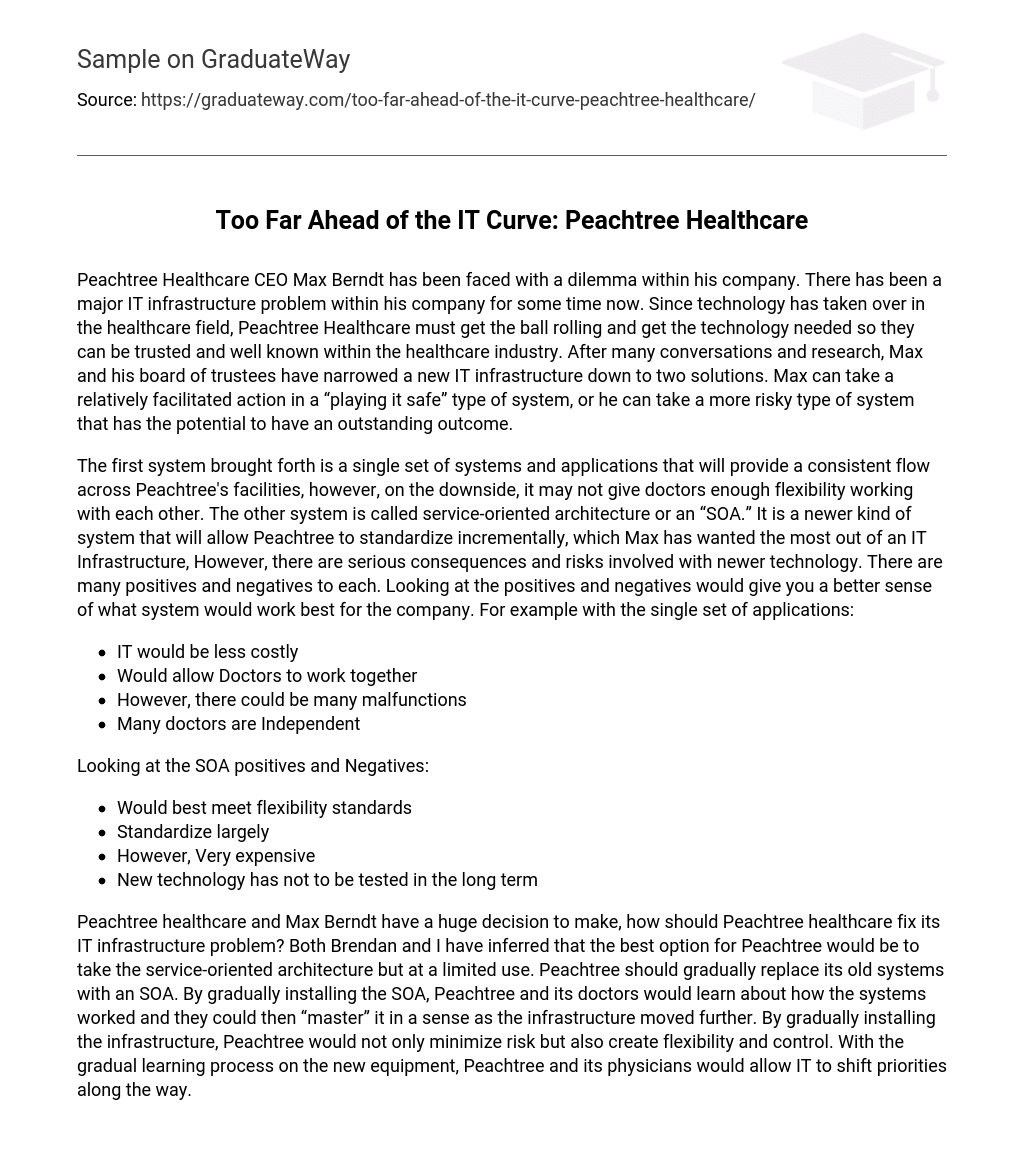Peachtree Healthcare CEO Max Berndt has been faced with a dilemma within his company. There has been a major IT infrastructure problem within his company for some time now. Since technology has taken over in the healthcare field, Peachtree Healthcare must get the ball rolling and get the technology needed so they can be trusted and well known within the healthcare industry. After many conversations and research, Max and his board of trustees have narrowed a new IT infrastructure down to two solutions. Max can take a relatively facilitated action in a “playing it safe” type of system, or he can take a more risky type of system that has the potential to have an outstanding outcome.
The first system brought forth is a single set of systems and applications that will provide a consistent flow across Peachtree’s facilities, however, on the downside, it may not give doctors enough flexibility working with each other. The other system is called service-oriented architecture or an “SOA.” It is a newer kind of system that will allow Peachtree to standardize incrementally, which Max has wanted the most out of an IT Infrastructure, However, there are serious consequences and risks involved with newer technology. There are many positives and negatives to each. Looking at the positives and negatives would give you a better sense of what system would work best for the company. For example with the single set of applications:
- IT would be less costly
- Would allow Doctors to work together
- However, there could be many malfunctions
- Many doctors are Independent
Looking at the SOA positives and Negatives:
- Would best meet flexibility standards
- Standardize largely
- However, Very expensive
- New technology has not to be tested in the long term
Peachtree healthcare and Max Berndt have a huge decision to make, how should Peachtree healthcare fix its IT infrastructure problem? Both Brendan and I have inferred that the best option for Peachtree would be to take the service-oriented architecture but at a limited use. Peachtree should gradually replace its old systems with an SOA. By gradually installing the SOA, Peachtree and its doctors would learn about how the systems worked and they could then “master” it in a sense as the infrastructure moved further. By gradually installing the infrastructure, Peachtree would not only minimize risk but also create flexibility and control. With the gradual learning process on the new equipment, Peachtree and its physicians would allow IT to shift priorities along the way.





